Ways to Remove Pesky Pilling from Your Clothes

If you want to learn how to remove pilling from clothes, just stay on this post for a little longer, because I will show you all. It’s awful to have some tiny knots on your brand new sweater only after one basic wash, right?
The thing is, it’s not the end of the world – you can easily fix this problem! With just some efficient tools and tips, your clothes will look like a new one! Believe it or not, keep reading my writings and you’ll definitely find something helpful!
What Causes Pilling?

Pilling, also called lint ball, bobble, or fuzzball appears in small fiber balls on clothes. The abrasion of the fiber produces these balls to other surfaces over time. Washing and wearing clothes too many times are also the leading causes that lead to pilling.
You can see pilling on any piece of clothes or fabrics. It often shows up on the clothing parts that are easily exposed to different surfaces in daily routines, such as the thighs and back of pants, under the arms, collars, and cuffs of a shirt, etc.
Any fibers can pill! That’s the truth. But there are some textiles more prone to pilling than the others. It is based on the physical characteristics of that fiber. While natural fabrics almost don’t pill (linen, silk, cashmere), man-made textiles are more likely to pill (nylon, polyester).
It is considered case-by-case since there are some fabrics that mix natural and synthetic textiles such as cotton/polyester blends. This fabric is even more likely to pill as a whole since the weaker part easily knots around the stronger one.
If you compare the knitted and the woven fabrics, you can imagine that the knitted textiles are easier to spill than the other ones. It is mostly because the threads are looser in the knitted materials. So, the fiber looseness or the tightness does matter in this pilling case.
Sometimes, you can see white thread knots on the dark-colored fabrics. The pilling does not always come from the textile itself, but also from other clothing items that are washed together in a washing machine.
In most cases, the pilling does not affect the wearability or the normal functions of clothes, but it leaves an unpleasant look on your garments. Those excessive balls can gradually create a hole in the fabric piece. So you should better get rid of them as soon as possible!
More reasons are explained and some cool tips in eliminating fuzzballs are coming up!
Making Use Of Your Household Tools To Remove Pilling
Do you know that some simple tools available around your house can be used to eliminate the lint balls on garments? They may not be specifically designed for doing this but they can be really effective to some extent! Let’s see what you can do!
A Pair Of Scissors
I’m pretty sure that scissors will appear in any house on this entire planet! A pair of scissors may become your savior in some emergencies! You may use a pair of scissors to trim away the annoying pilling.

Preparation:
- A pair of scissors
Instructions:
Step 1: Make sure that your item spreads on a hard, flat, or slightly curved surface.
Step 2: You can try pulling every single lint ball away with your fingers before using the scissors.
After that, if it seems not to work so well, pull the clothes taut by putting a hand inside of it, then hold the scissors on the other hand and gently trim away every lint ball on the stretched area.
Tips:
- Hold the pair of scissors tight and keep it close to the clothing piece. Handle with care since you may cut open a hole on your garment!
- Consider nail scissors if you have them around. You can use them to cut off pilling easily and more precisely than the usual scissors.
A Duct Tape
Duct tape is a super flexible, sticky, and strong tape-perfect for ridding pilling on your garments. (1) It’s a great and easy-to-use household tool to solve your current clothing problem! You can find duct tape in any stationery or equipment store with the signature grey.

Preparation:
- A roll of duct tape
Instructions:
Step 1: Check and measure the pilling area to identify the length of your upcoming piece of tape.
Step 2: Cut enough duct tape to use. Stick it on the area you want, then continuously tap it on the fabric to remove all of the lint balls. You can see that the pills will stick to the tape and get out of your clothes immediately!
Step 3: Change the tape when the old one is full of small balls. Also, change them when the glue is not sticky anymore.
The best thing about this method is that it can clean a large area of clothes at one time! Keep repeating the process until the pills on your garments are no longer there!
A Shaving Razor
A shaving razor or disposable razor is considered one of the most useful tools to eliminate the bobbles on your piece of garments. It is usually used to shave or remove unwanted hair on some body parts. You can always make use of it to get rid of pills.

Preparation:
- A shaving/disposable razor
- Tape
- A soft piece of cloth
Instructions:
Step 1: Flatten your garment on a hard surface.
Step 2: Stretch the part of the fabric that you want to remove pilling. Take the prepared razor and gently move over your piece of clothing. Shave in straight lines. Remember to clean the razor off with a soft fabric whenever it is full of lint balls.
You should place the razor at a proper angle and move it in the same direction that the pilling produces. Start with the lightest touch. Don’t put much pressure on the tool to ensure that you won’t accidentally cut and destroy your clothes.
Step 3: After obliterating the pilling, wrap the tape around your index finger and start to press against the area, including excessive small balls to stick them out. Repeat the step whenever the tape is full of lint balls.
Tips:
- If you don’t have packing tape on hand, you can also use masking tape to remove piles of pills on clothes.
- It’s highly recommended to use a new and sharp razor for this method. You should never use a shaving razor that still has some soap on it since it may make the fabric produce more pills.
A Hair Comb
With a narrowed-toothed comb, you can quickly get the pills out of your garments in just a sec! Of course, it cannot be as effective as those professional tools for removing pilling, but I’m sure it may help you fix things!

Preparation:
- A hair comb (it should be a narrowed-tooth one)
- A rag or towel paper
Instruction:
Step 1: Lay your garment on a table or somewhere flat.
Step 2: Slowly use your comb to move downwards on the fabric. Be patient, don’t rush! If you are moving too fast, the outcome will be terrible! Again, don’t press or put heavy pressure on your tool because it may damage the clothes.
Clean off the teeth of the comb with a rag or towel papers when the stuck pills are too much. Do it over and over again to eliminate the annoying pills on your clothing items!
If this method doesn’t really satisfy you, try the following ways! But now you know that the comb is not only used to comb your hair, right?
Velcro Hair Rollers
Velcro hair rollers are a popular tool for creating and maintaining curly hair. Since they are used for hair, they are gentle enough to move on delicate fabrics to get rid of unwanted pills. I’m sure that you’ll be amazed by the result!

Prepare:
- Velcro hair rollers
Instructions:
Step 1: Make sure the piece of clothing sits on an even surface, such as an ironing table.
Step 2: Attach the roller to the fabric and start to roll it gently in a straight line until there is no pill left on the clothes. You can see that the pills will stick on the hair roller at the end of the line.
Step 3: Lift the roller and continue to roll on other pilling areas of your garments. You can use as many Velcro hair rollers as you want to speed up the process.
Bonus Information:
A stronger version of velcro hair rollers is a strip of “real” Velcro. If you have it on hand, don’t hesitate to use it, but remember, don’t apply it on woolen materials or cashmere. It is likely to damage the fabrics more than hair rollers.
Sandpaper Sponge
A sandpaper sponge is a combination of sandpaper and sanding blocks. The sandpaper is coated with an abrasive material that can be used in many cleaning products to get rid of different stains from clothes or many other surfaces. (2)

Preparation:
- A sandpaper sponge
Instructions:
Step 1: Lay your item on a flat, clean, and dry surface.
Step 2: Take the sandpaper sponge and gently scrub your garment until the pills are not attached to it anymore.
Step 3: Shake your clothes to make the excessive bobbles fall off. You can also use tape at this step to do it faster.
With a couple of basic household equipment, you can solve your problem as soon as possible! However, for a more efficient result, you should buy some professional tools for this. Check out the next section!
Purchasing Professional Pilling-Removing Tools
You can enhance the final result to get a perfect ending with some professional tools that were born to solve this problem! Let’s find out what they are and how they can get you out of this trouble.
Electric Fabric Shaver
An electric fabric shaver may not be the cheapest tool to purchase, but it is the most effective one to remove pilling. I’m sure that it’s worth every penny spent! Most electric shavers use batteries, so it’s convenient to use anywhere, even outside of your house.

Preparation:
- An electric fabric shaver
Instructions:
Step 1: Spread the clothing item on a hard and flat surface.
Step 2: Put the batteries in the electric fabric shaver and apply them to the affected area in a modest circular motion. Don’t put any pressure on the shaver, just let it do the automatic work. Increase the contact when needed by setting the shaver as instructed.
Keep in mind that the piles of excessive pills will build up inside the barrel of the shaver, so remember to clean it regularly.
Sweater Comb
Consider purchasing a sweater comb. Compared to the usual hair comb, this comb is specifically designed to get rid of pilling on sweaters and woolen garments, with smaller teeth and closer spaces between them.
Preparation:
- A sweater comb
Instructions:
Step 1: Lay the garment onto a hard surface, then pull the affected fabric taut with one hand and hold the sweater comb in the other hand.
Step 2: Scrape the clothes carefully and slowly so that you won’t harm them unintentionally. Never move the comb too fast or carelessly because your sweater will end up looking like a rag.
Enjoy the non-pilling garment after using a sweater comb to deal with it!
Pumice Sweater Stone
A sweater stone, usually made of pumice, is another product designed to eliminate unwanted pilling on sweaters. It works magically on sweaters and many other types of fabrics, including woolen, tweeds, and upholstery.

Preparation:
- A pumice sweater stone
- Tape
Instructions:
Step 1: Flatten the garment on a hard, dry surface. Pull it taut with one hand.
Step 2: On the other hand, hold the sweater stone tight and drag it lightly across the pilled parts of your clothes, until the pilling is removed completely.
Step 3: Use tape to get away the excessive pills or just shake the fabric to make them go off your clothing.
It’s nothing hard to work with a pumice sweater stone! Learn these simple steps!
How To Prevent Pilling Before It Happens On Your Clothes?
There are actually some tips and tricks that you should know when purchasing and washing clothes so that you can avoid the occurrence of pilling as much as possible. Let’s get started!
Shopping Tips

As I have mentioned previously, some kinds of fabrics are more likely to pill. Some of them are artificial types and the type made of fiber blends with both natural and synthetic fibers. You can check the label of each garment to see what it is made from.
If you are purchasing sweaters, search for the tightly knitted ones. They have a lower chance of pilling than woven sweaters. The woven ones consist of looser threads that can start to pill easily only after one wash.
Laundry Techniques
You have learned how to choose clothes made of fabrics that are less likely to happen pilling, now it’s time for laundry tips. Washing the clothes properly can prevent the clothes from producing pills to the least! Note down these tips and use them for your next wash.

Before Washing: Always Turn The Garment Inside Out.
Keep in mind that the clothes should always be turned inside out so that the outside doesn’t have to endure the harsh effects of the washing machine. Also, the items rub together in a wash cycle creating cotton balls, so turning them inside out can avoid the pilling result.
Any zipper, hooks, buttons should be fastened carefully so that they cannot harm the fabrics. You may want to store your garments in the closet the inside-out way. It is a great tip in storing clothes and preventing pilling, too.
Sort Out The Laundry And Wash Them Separately.
Before getting into a wash, one more thing to do is to sort out your clothes according to fiber types and color. If they are made of synthetic ones, leave them aside and wash them in the next cycle with different settings. This can decrease the possibility of pilling on your clothing.
Choose The Most Gentle Setting For Easy-To-Pill Garments.
Consider using the lightest washing settings for your sorted items. A shorter wash cycle and slower agitation may help. For the best result, you should traditionally wash them, which is using your hands. And, don’t ever overload your garments in a washing machine!
Use The Proper Cleaners.
Always use liquid detergents to wash your clothes! Completely avoid powder detergent, since the tiny particles inside of it may wander around the wash load in the washing machine and produce more abrasion, which is harmful for your pilled items.
Heavy-duty laundry detergent and damaging bleach should also not be used in this case if you don’t want your items to break and pill easily.
Pick up the detergent that contains the enzyme cellulase, which can support breaking down and eliminating the pills. You can also use some fabric softeners to coat the fibers, thereby lessening the cause of creating more pills.
Avoid Using The Dryer.
Hang your garments and air dry them outdoors. Don’t use the dryer to dry the clothes since the hot temperature can make them pill quicker.
Make Sure To Brush Your Garments Frequently With A Lint Roller.
A lint brush or roller can help you prevent the occurrence of pilling, so try to regularly use it to brush your clothing items so that the pills have no chance to show up on them.
A brief explanation on pilling and short ways to prevent it are all included in here!
I hope you’ve learned how to protect your clothes with these specific tips so that the “snowball effect” will not happen on the items anymore!
FAQs
There are some commonly asked questions on removing pilling from garments and I have provided the short answers that you might need. Quickly skim the Q&A section to see whether your concern is lying here!
Have You Learned Ways To Remove Pilling Now?
The amazing techniques of eliminating pilling from your garments are all provided in the article to the fullest. You can apply them in your next wash so that you can decrease the chances of your clothes getting annoying and unattractive fuzz and lint balls.
Hope that you find this post helpful to yourself, family members, and friends. If so, I will appreciate it if you like and share my post to spread great hacks to everyone. Sharing is caring, don’t you agree? Also, comment below if you have any more questions!

References
- En.wikipedia.org. 2021. Duct tape – Wikipedia
- En.wikipedia.org. 2021. Sandpaper – Wikipedia.

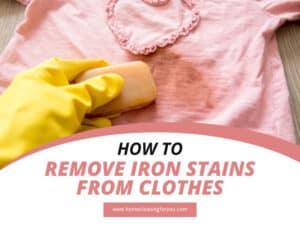
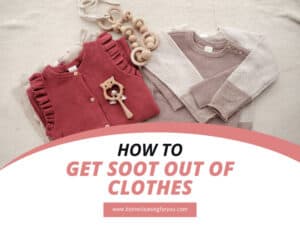
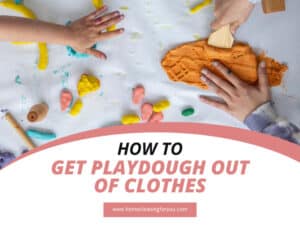
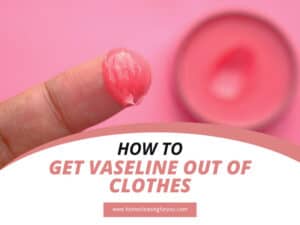
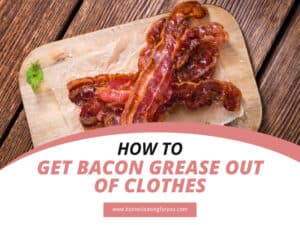
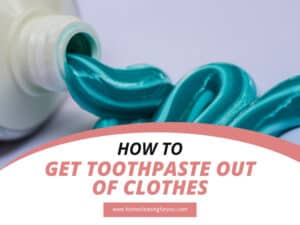
Samantha Lee
Head Cleaning Expert
Expertise
Professional Home Cleaning, Green Cleaning Techniques, Stain Removal & Fabric Care, DIY Home Maintenance & Organization, Sustainable Cleaning Products, Home Care for Busy Lifestyles
Education
University of Denver
Samantha Lee is the Head Cleaning Expert at HomeCleaningForYou.com, specializing in eco-friendly home care. She holds a Bachelor of Science in Environmental Science from the University of Denver, focusing on sustainable cleaning solutions.
With expertise in green cleaning, stain removal, and DIY home maintenance, she helps homeowners keep their spaces fresh and chemical-free. Samantha has been featured in lifestyle publications and has partnered with brands promoting natural cleaning products.
She also shares practical tips through her blog, online courses, and workshops. Passionate about sustainability, she enjoys testing new eco-friendly cleaning methods and spending time outdoors.